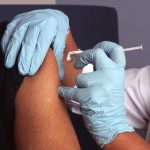By Sophie Saint-Firmin, News Editor
Hospitals across the U.S. are being impacted by a widespread shortage of intravenous bags. Hurricane Maria, which struck Puerto Rico in September 2017, halted production of one of the only American manufacturers of IV bags, NutriDrip, setting off a months-long shortage of hospital essentials, according to The Guardian.
The aftermath of Hurricane Maria is still being felt today as hospitals are being forced to take alternative routes to treat their patients. Chief Pharmacist John Armitstead at Lee Health in Fort Myers, Florida, told USA Today, “It’s unprecedented to have this kind of large-scale, nationwide drug shortage of such a basic item in U.S. health care.”
USA Today said that with flu season in full swing, hospitals are scrambling to treat patients while still conserving supplies. Although it is more time consuming, many hospitals have resorted to “pushing” the antibiotics and fluids through a syringe, according to ABC News. It takes an extra three to five minutes for nurses to complete this procedure, but it prevents the use of IV bags.
Some hospitals do not feel the need to inform their patients of the ongoing shortage. Chief Pharmacy Director Mark Thomas from Cincinnati Children’s Hospital Medical Center stated, “We’ve been able to manage the shortage very well. I don’t believe that it’s been necessary to notify our patients or their caregivers.”
The federal government is working on restoring the IV plants, but the shortages will continue. “It really doesn’t speak very well to our health care system at this point,” said Rita Jew, director of pharmacy at the University of California San Francisco’s Mission Bay hospital. “A lot of people are referring to this like it’s almost like we’re in a third world country, and there’s some truth to that. These are basic supplies that we have taken for granted.”
ABC News reported that while the production situation is still fragile, the plants are expected to return to normal levels by April.
Photo courtesy of NASA Goddard Photo on Foter




